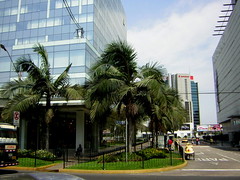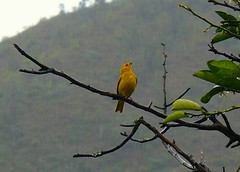Peru and Ecuador: Border Conflicts
The northern Peruvian border has long been a problem for both countries – from as far back as 1828 when land disputes sparked a war between with what was then Gran Colombia and Peru.
In this century Peru and Ecuador have fought three times for the same reason – a lack of clarity in the newly independent nations borders. In the 1941, after dozens of treaties that rather than prevented conflict actually started many, the Peruvians accused the Ecuadorians of violating the so-called Status Quo border agreed to finally put an end to conflict in the region. Ecuador accused Peru of using incidents between border patrols as a pretext for a large scale war. Peru insisted the incursions into Peruvian territory are a valid pretext for war. Peru invaded and captured parts of southern Ecuador including Machala and parts of Loja. The extent of the Peruvian invasion overwhelmed Ecuador and they requested a ceasefire. Peru began placing border markers along the previously agreed border line but due to inaccurate geographic mapping there were numerous inconsistencies leading to Ecuador withdrawing its support for the new agreed borderline. In 1960 nationalist Ecuadorian president José María Velasco Ibarra declared the previous agreement void despite it still being recognised by all involved peace-brokering South American nations.
In 1981 Ecuador began constructing watch posts on the Peruvian side of the El Condor mountain ridge. The three watch posts were given the names Paquisha, Mayaicu and Machinaza, the names of Ecuadorian towns. Peru says this was an attempt to confuse the international community and make Peru look like an aggressor and occupier. The Peruvian and Ecuadorian air forces clashed and Peru took control of the watch posts. The conflict occurred in the Peruvian side of the mountain range, but in a location not properly demarcated.
In 1995 conflict broke out again. Peru had been militarising the eastern side of the mountain range of El Condor. Ecuador claimed the area as theirs, and war had almost broken out in 1991. In November of 1995 a Peruvian patrol was captured by an Ecuadorian patrol and taken to a nearby outpost, being told they had violated Ecuadorian territory. While being prepared to leave, the Peruvians realised they were actually inside Peruvian territory, as was the outpost they were taken to. The captured Peruvians demanded the Ecuadorians abandon the outpost or be removed by force. Both sides then sent large numbers of forces to the area. Annett’s father, a retired air force commander who was involved in the conflict, recalls how Peru had to airlift its troops and munitions into the area while on the Ecuadorian side there were roads and large airbases. This time there was no embarrassing defeat for Ecuador and both sides proved evenly matched in bitter fighting.
The latest conflict finally made both sides see a new agreement was necessary and by 1998 a permanent border agreement was finally put in place.
Idiotic comments from the press, first in Ecuador then Peru, last week suggested the agreement still has holes in it and there are pending border issues to discuss. This alarmed the Peruvian Government and President Alan Garcia promptly contacted Ecuador’s Rafael Correa. The pair met in Tumbes and dispelled all rumours.
“Our borders, both land and maritime, have long been established in writing. Additionally, the treaty will also prevent any possible misunderstandings from occurring in the future,” said Ecuador’s Chancellor, Maria Fernanda Espinosa before the meeting took place to confirm this.
Tags: border, ecuador, fap, garcia, rafael correa









